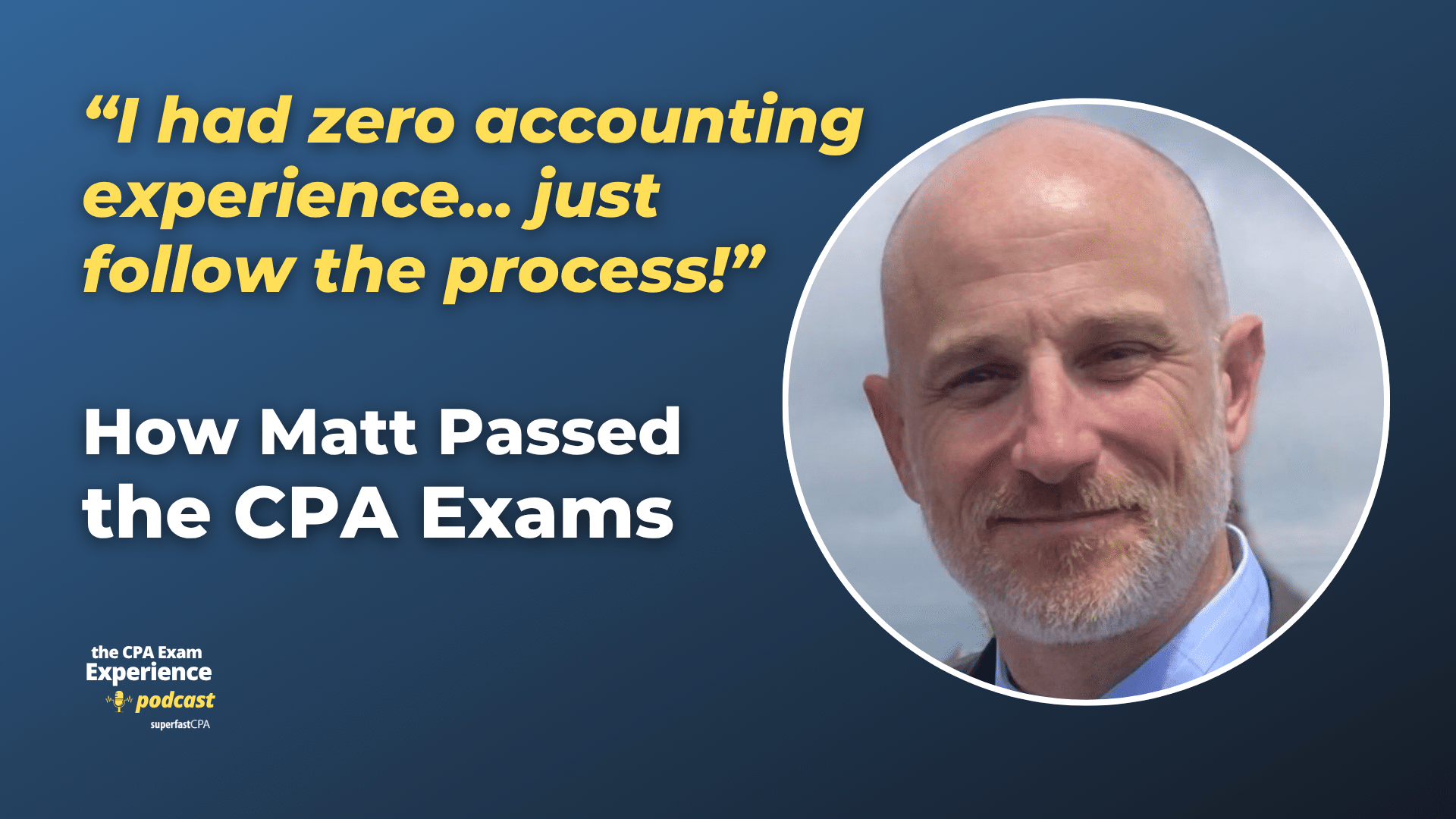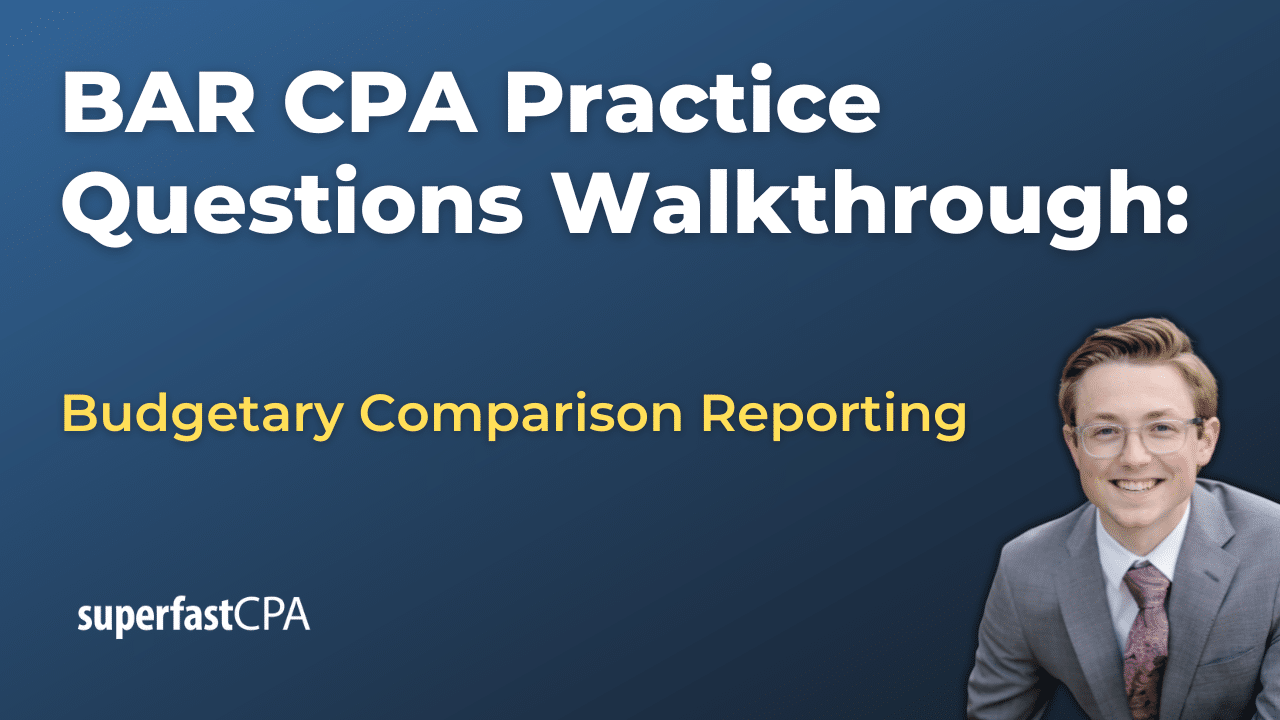In this video, we walk through 5 BAR practice questions teaching about business combinations resulting in goodwill. These questions are from BAR content area 2 on the AICPA CPA exam blueprints: Technical Accounting and Reporting
The best way to use this video is to pause each time we get to a new question in the video, and then make your own attempt at the question before watching us go through it.
Also be sure to watch one of our free webinars on the 6 “key ingredients” to an extremely effective & efficient CPA study process here…
Business Combinations Resulting in Goodwill
In a business combination, the acquiring entity must recognize the assets and liabilities it obtains at their fair values on the acquisition date. If the consideration paid differs from the net fair value of those assets and liabilities, the acquirer must also record either goodwill or a gain from a bargain purchase. This post explains how to calculate those amounts and record the necessary journal entries in accordance with acquisition accounting principles.
Determine the Purchase Price
The starting point in any acquisition analysis is determining the amount the acquirer paid. This includes any form of consideration transferred to the seller, such as cash, common stock, or other non-cash assets. The amount recorded should reflect the fair value of that consideration on the acquisition date—not the announcement date, agreement date, or any other earlier time.
When stock is issued as consideration, the market price of the stock on the acquisition date is used.
Example:
Hemsworth Co. issues 300,000 shares as part of the acquisition. The shares are trading at $52 on the acquisition date.
- Purchase Price = 300,000 × $52 = $15,600,000
If the company paid part of the amount in cash and part in shares, both components would be added together at their respective fair values.
Identify and Measure the Net Assets Acquired
The acquirer must identify all assets and liabilities of the acquired company that meet the recognition criteria under accounting standards. These items are recorded at their fair values, regardless of their carrying amounts on the acquiree’s books. That includes tangible items like equipment and inventory, as well as intangible assets such as patents, customer relationships, or trademarks.
Often, adjustments to fair value are necessary. For instance, machinery may have appreciated beyond its historical cost, or inventory may be over- or under-valued on the acquiree’s balance sheet.
Example:
Consider the following acquisition-date information for Porter Inc.:
- Cash: Book Value $150,000 / Fair Value $150,000
- Inventory: Book Value $1,100,000 / Fair Value $1,300,000
- Equipment: Book Value $3,800,000 / Fair Value $4,200,000
- Unrecorded Trademark: Fair Value $1,000,000
- Liabilities: Book Value $2,300,000 / Fair Value $2,300,000
In this case, the total fair value of identifiable net assets is:
($150,000 + $1,300,000 + $4,200,000 + $1,000,000) − $2,300,000 = $4,350,000
Only the fair values are used in the final calculation. The book values are provided for context but are not used in the journal entry.
Calculate Goodwill or Bargain Purchase Gain
Once the purchase price and fair value of the net assets are known, compare them to determine whether goodwill or a gain must be recognized.
- If purchase price > fair value of net assets → record goodwill
- If purchase price < fair value of net assets → record bargain purchase gain
Goodwill is considered an intangible asset representing future economic benefits not individually identified and separately recognized. A bargain purchase gain arises when the acquirer pays less than the fair value of the net assets—often due to distress sales or negotiating leverage.
Goodwill Example:
- Purchase price: $15,600,000
- Net assets at fair value: $14,100,000
- Goodwill: $1,500,000
Bargain Purchase Example:
- Purchase price: $4,500,000
- Net assets at fair value: $5,000,000
- Bargain Purchase Gain: $500,000
In both cases, the difference is recognized immediately at the acquisition date.
Prepare the Journal Entry
The final step is to prepare the journal entry that reflects the business combination on the acquirer’s books. This involves debiting all identifiable assets acquired at their fair values and crediting liabilities assumed. The consideration transferred is credited (e.g., cash, common stock), and the difference is either a debit to goodwill or a credit to gain.
The form of consideration determines the specific credit side. For example, if cash is used, credit Cash. If shares are issued, credit Common Stock and Additional Paid-In Capital as appropriate based on par value and excess.
Example: Journal Entry with Goodwill
Hemsworth Co. acquires Porter Inc. for $15,600,000. Fair value of net assets is $14,100,000.
- Debit Cash: $150,000
- Debit Inventory: $1,300,000
- Debit Equipment: $4,200,000
- Debit Trademark: $1,000,000
- Debit Goodwill: $1,500,000
- Credit Liabilities: $2,300,000
- Credit Common Stock and/or Cash: $15,600,000
Example: Journal Entry with Bargain Purchase
Purchase price: $4,500,000
Net assets at fair value: $5,000,000
- Debit Cash: $200,000
- Debit Inventory: $1,300,000
- Debit Equipment: $2,500,000
- Debit Trademark: $1,000,000
- Credit Liabilities: $2,000,000
- Credit Cash or Equity: $4,500,000
- Credit Gain on Bargain Purchase: $500,000
The gain on bargain purchase is typically recognized in the income statement on the acquisition date. It reflects that the acquirer purchased net assets at a discount.
Additional Considerations
- Intangible assets that were not recorded by the acquiree but are identifiable and measurable (like brand names or customer lists) must be recorded by the acquirer.
- The acquirer must reassess the measurement of all items before concluding that a bargain purchase gain exists. This includes verifying fair values and ensuring all assets and liabilities have been identified.
- Transaction costs (e.g., legal fees, consulting fees) are not included in the purchase price. They are expensed as incurred.
Summary of Key Principles
- Use fair value of consideration on acquisition date—not earlier dates—for measurement.
- Record all identifiable assets and liabilities at their fair values, not book values.
- The difference between purchase price and fair value of net assets determines whether goodwill or a bargain purchase gain is recorded.
- Prepare a single journal entry to reflect the transaction in full, including all assets, liabilities, consideration transferred, and resulting goodwill or gain.









